
2018年10月31日 星期三
Hayabusa2 Ascends from Asteroid Ryugu

Big Court Win For The Thirty Meter Telescope
Embattled Thirty Meter Telescope scores big win in Hawaii's highest court, Nature
"Hawaii's supreme court has ruled in favour of building the Thirty Meter Telescope (TMT) atop the mountain Mauna Kea. The decision removes the last legal hurdle preventing the US$1.4-billion project from resuming construction on Hawaii's Big Island. "It is a tremendously important and significant decision that provides secure legal grounds to restart construction of this transformative facility," says Michael Balogh, an astronomer at the University of Waterloo in Canada who chairs an advisory committee that represents Canadian astronomers' interests in the TMT."
from NASA Watch https://ift.tt/2qjdSc6
via IFTTT
Happy Birthday, Michael Collins!

NASA Invites Media to 16th SpaceX Cargo Launch to Space Station
October 31, 2018
from NASA https://ift.tt/2DbSnTn
via IFTTT
ISS Daily Summary Report – 10/30/2018
October 31, 2018 at 12:00AM
from NASA https://ift.tt/2Q4If1u
via IFTTT
2018年10月30日 星期二
R Leporis: A Vampire's Star
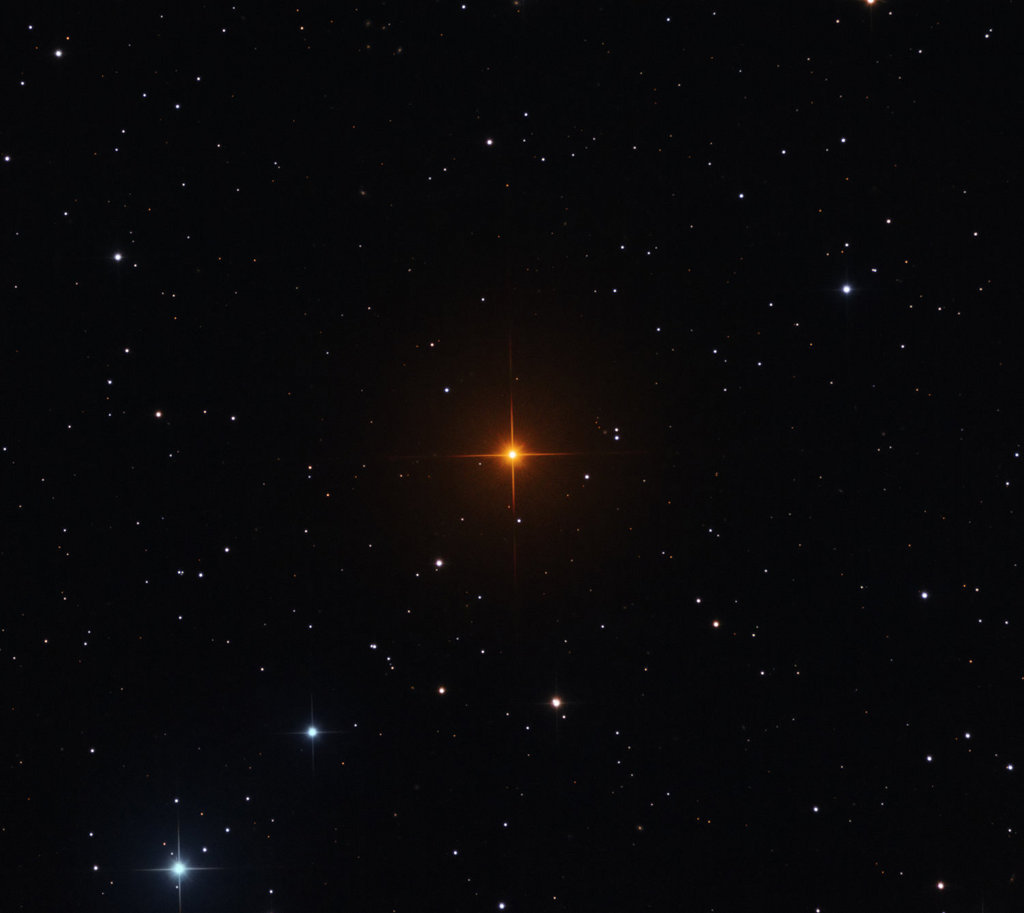
When Supporting Space Comes Back To Bite You
For the 7th Congressional District: Lizzie Pannill Fletcher, opinion, Houston Chronicle
"It's not that Culberson doesn't care about water. He does. But most of the time, he seems to care a bit more about the water on Europa, an icy moon orbiting Jupiter, than he does the water in the Addicks and Barker dams. Or in our bayous. Or in our homes. Culberson has expended untold political capital trying to force NASA to send probes to Europa in search of alien life. That's an admirable scientific mission, even if some planetary researchers think the limited resources could be better spent. Here on Earth, Houstonians can rest assured that Fletcher will prioritize human life over the extraterrestrial. That includes life-saving flooding policies that emphasize prevention over costly recovery."
from NASA Watch https://ift.tt/2zdyCX5
via IFTTT
Kepler Planet Hunting Mission Ends
FWIW @NASAKepler has discovered 2,681 confirmed exoplanets and 2,899 candidate exoplanets. Assuming that that they're all confirmed that's 5,580 planets at a cost $125,448.03 each. pic.twitter.com/p84pT10x29
— NASA Watch (@NASAWatch) October 30, 2018
NASA Retires Kepler Space Telescope
"After nine years in deep space collecting data that indicate our sky to be filled with billions of hidden planets - more planets even than stars - NASA's Kepler space telescope has run out of fuel needed for further science operations. NASA has decided to retire the spacecraft within its current, safe orbit, away from Earth. Kepler leaves a legacy of more than 2,600 planet discoveries from outside our solar system, many of which could be promising places for life."
from NASA Watch https://ift.tt/2ABPx7j
via IFTTT
A New View of Our Starry Night

NASA Retires Kepler Space Telescope, Passes Planet-Hunting Torch
October 30, 2018
from NASA https://ift.tt/2qjslF2
via IFTTT
Farewell, Kepler
from Planetary Society Blog https://ift.tt/2Jrz092
via IFTTT
NASA Wants Throwaway Rockets For A Reusable Architecture
It is rather hilarious that people are hyping reusability and @NASA_SLS in the same tweet @JimBridenstine If @NASA really, really wants reusability for the whole Moon thing then use rockets made by @SpaceX and @BlueOrigin instead of 100% throwaway rockets like #SLS. Just sayin' https://t.co/D3xPRYAyNm
— NASA Watch (@NASAWatch) October 30, 2018
from NASA Watch https://ift.tt/2zhKoQ0
via IFTTT
ISS Daily Summary Report – 10/29/2018
October 30, 2018 at 12:00AM
from NASA https://ift.tt/2JswL5k
via IFTTT
NASA to Hold Media Call on Status of Kepler Space Telescope Today
October 30, 2018
from NASA https://ift.tt/2yP2w4D
via IFTTT
2018年10月29日 星期一
Orionids Meteors over Inner Mongolia
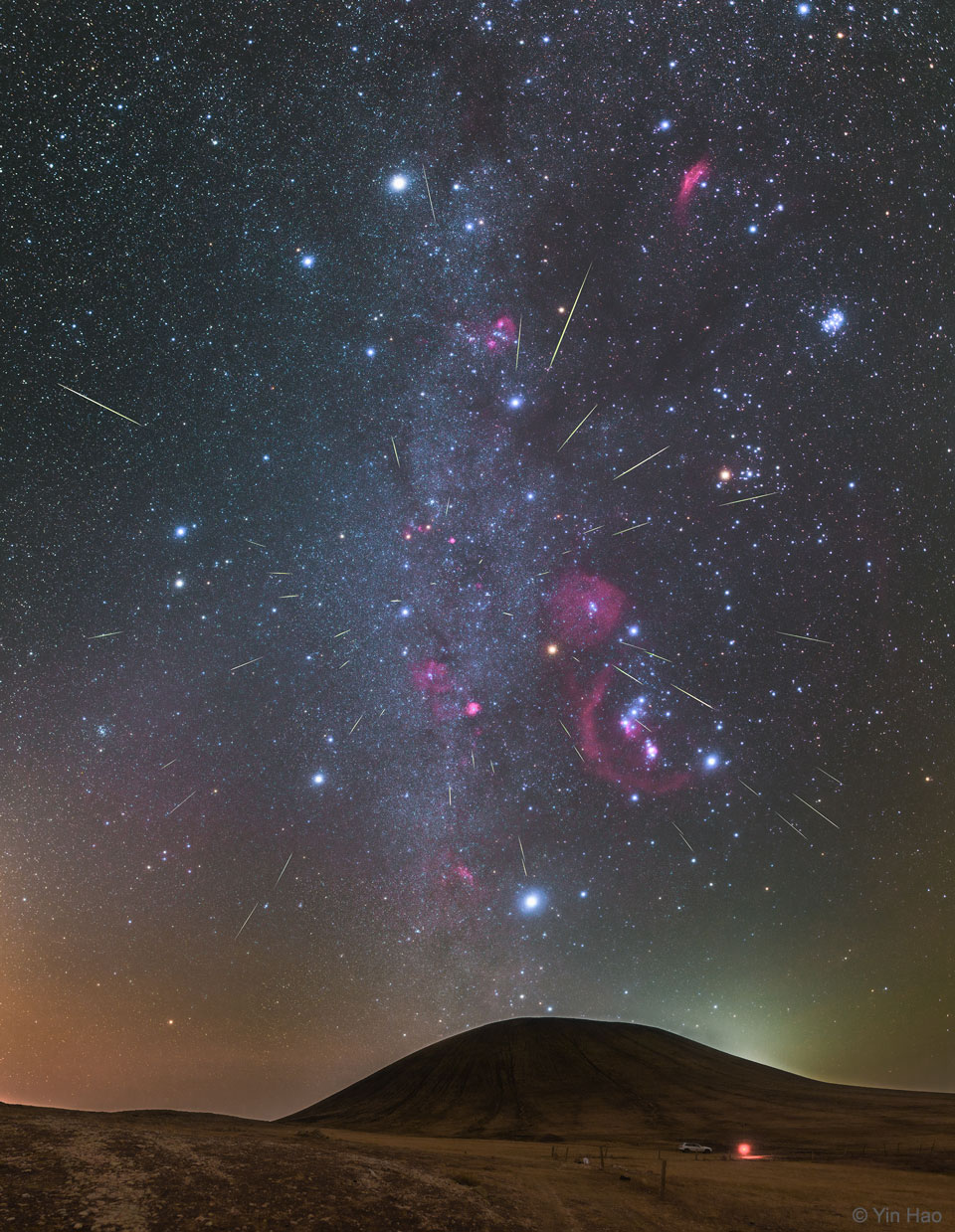
Someone Needs To Set An Example ...
WRT "man made object' @JimBridenstine? Really? No women are involved in the Parker Solar Probe mission? @NASASun https://t.co/YhIZJ1ODra
— NASA Watch (@NASAWatch) October 30, 2018
from NASA Watch https://ift.tt/2zhJaEm
via IFTTT
Someone Has Stopped Drinking The SLS Koolaid - For A Moment
SLS contractor gets real, says program needs to focus on "affordability", Ars Technica
"We here inside the program tend not to think about the need to advocate," Precourt said. "There are a lot of people with other ideas about how we should do this mission, so I think it's incumbent on us. It's not too early to be thinking about the transition from development to production. And that means a totally different management philosophy and cost structure for all of us." Precourt said contractors should consider a future in which NASA's present multibillion expenditures on rocket development costs need to be cut in half in order for the SLS vehicle to have a robust future. "All of us need to be thinking about [how] our annual budget for this will not be what it is in development," he said. "That's a very serious problem that we have to look forward to, and to try to rectify, so that we are sustainable." If the other speakers had thoughts about Precourt's comments, they did not share them during the ensuing discussion."
- DC Lobbying Firms Enter The SLS Vs Commercial Space Proxy War , earlier post
- Big Aerospace Reaches For The Stars While Using Smear Tactics, earlier post
- Join Boeing's SLS Fan Club So They Can Track Your Activity Online, earlier post
- OIG Audit: NASA's Management of the Space Launch System Stages Contract, earlier post
from NASA Watch https://ift.tt/2AzGUKP
via IFTTT
John Glenn Returns to Space on the STS-95 Mission

LightSail 2 launch pushed to early 2019
from Planetary Society Blog https://ift.tt/2CReLA6
via IFTTT
2018年10月28日 星期日
Hubble Is Working Again
The Hubble Space Telescope
— HubbleScience (@hubblescience) October 28, 2018
Unlocking the Secrets of the Universe
Daily Report #8140
Period Covered:
08:00 PM October 26, 2018 - 07:59 PM October 27, 2018
(DOY 300/0000z - 300/2359z) pic.twitter.com/B3jCyPlY9c
from NASA Watch https://ift.tt/2yFfOQX
via IFTTT
2018年10月26日 星期五
Airglow Borealis
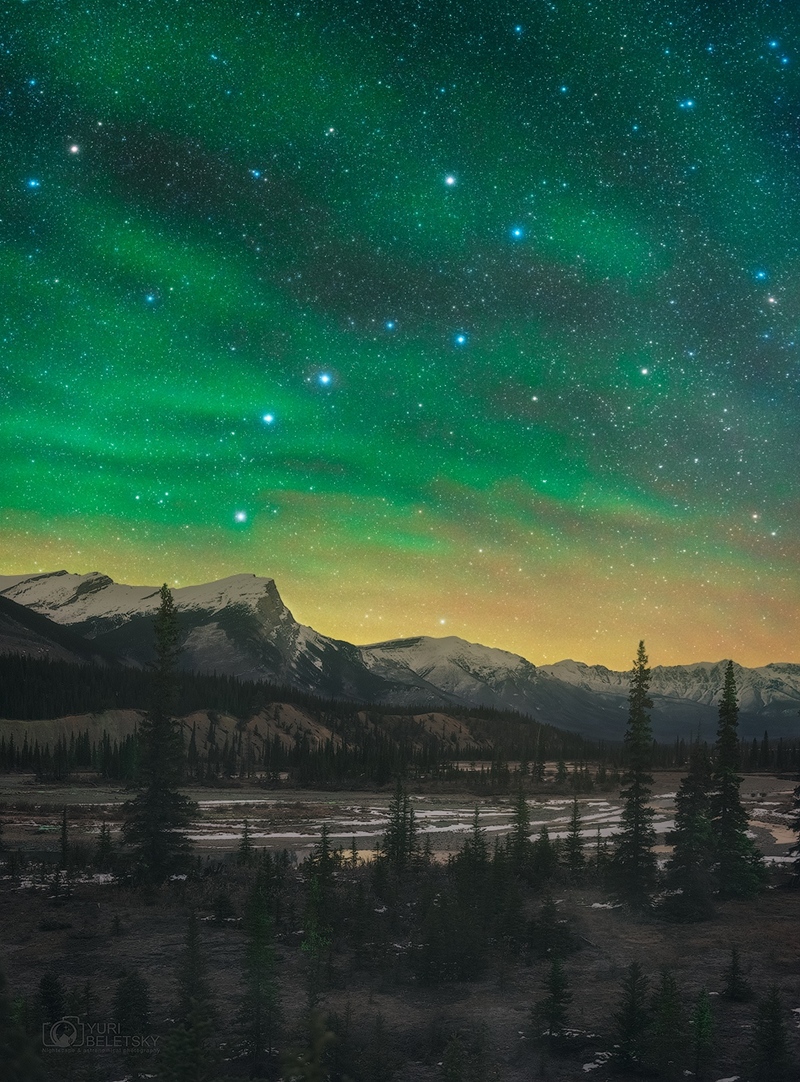
It’s Valley Fog Season

NASA Invites Media to View Orion Test Capsule and Recovery Hardware
October 26, 2018
from NASA https://ift.tt/2z4JczA
via IFTTT
First Mate: LauncherOne Rocket and Cosmic Girl 747
First Mate: Virgin Takes Step Forward with First Mating of LauncherOne Rocket and Cosmic Girl 747, Virgin Orbit
"Today at Long Beach Airport stands a 747 aircraft with a rocket under its wing. For the first time ever, Virgin Orbit's LauncherOne rocket has been integrated with its carrier aircraft, marking a major milestone on the path to the innovative small satellite launch service's first space shot. The successful operation capped off a banner day of firsts on Wednesday for the company at its Long Beach, Calif. base."
Marc's note: As NASA has a contract with Virgin Orbit this is good news. There soon should be another option to launch small satellites.
from NASA Watch https://ift.tt/2PnmI6Y
via IFTTT
First Auction of Neil Armstrong's Private Collection to be Held Next Week
First Moonwalker Neil Armstrong's Private Collection to be Sold at Heritage Auctions, Heritage Auctions
"The vast personal collection of Neil Armstrong, who as the first man to walk on the moon changed the course of human history, will be presented in a series of auctions beginning November 1-2, 2018 by Heritage Auctions. The Armstrong Family CollectionTM will offer never-before-seen artifacts from his momentous lunar landing to private mementos -- including pieces of a wing and propeller from the 1903 Wright Brothers flight that Armstrong took with him to the moon, a gold pin from Gemini VIII, Armstrong's first mission, and historic correspondence about the planning that went into the moon mission. The auctions will coincide with the 50th anniversary of the historic Apollo 11 mission."
from NASA Watch https://ift.tt/2OOHTiS
via IFTTT
ISS Daily Summary Report – 10/25/2018
October 26, 2018 at 12:00AM
from NASA https://ift.tt/2JhlK6T
via IFTTT
2018年10月25日 星期四
IC 59 and IC 63 in Cassiopeia
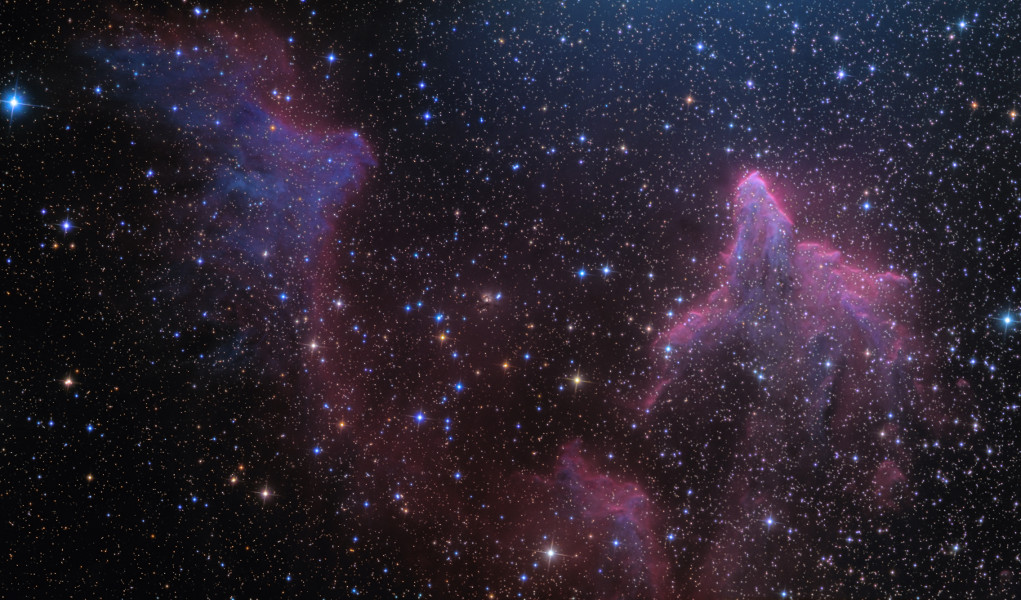
NASA to Host Briefing on November Mars InSight Landing
October 25, 2018
from NASA https://ift.tt/2SjVMU8
via IFTTT
NASA Awards Library and Information Services Technical Support Contract
October 25, 2018
from NASA https://ift.tt/2Pl3r63
via IFTTT
NASA Invites Media to Learn About Urban Air Mobility
October 25, 2018
from NASA https://ift.tt/2CFfxAg
via IFTTT
Hubble Captures the Ghost of Cassiopeia

Will Russia Launch Astronauts to the ISS in December?
Bridenstine Reiterates December Launch to ISS on Track, and Other Space Council Tidbits Space Policy Online
Bridenstine: "'We have a really, really good idea of what the issue is' and there will be a 'number of Soyuz launches in the next month and a half' before a launch with a crew. He called it the 'most successful failed launch we could have imagined.'"
Marc's note: Are the Russians about to pull a rabbit out of their hat and make a human return to flight in December? Between now and then there will be two Soyuz launches, one cargo resupply to the space station and the other a satellite.
from NASA Watch https://ift.tt/2SjjEre
via IFTTT
ISS Daily Summary Report – 10/24/2018
October 25, 2018 at 12:00AM
from NASA https://ift.tt/2JfSa1q
via IFTTT
Russian Soyuz-2 Successfully Launches
Successful Launch of the Soyuz-2 Launch Vehicle From the Plesetsk Cosmodrome, ROSCOSMOS
"On Thursday, October 25, at 0315 hours Moscow time, the State Space Test Center Plesetsk in the Arkhangelsk Region was successfully launched by the Soyuz-2.1b medium-class launch vehicle with a spacecraft in the interests of the Russian Defense Ministry."
from NASA Watch https://ift.tt/2RbSCkb
via IFTTT
2018年10月24日 星期三
Barnard 150: Seahorse in Cepheus

Parker Solar Probe Looks Back at Earth

ISS Daily Summary Report – 10/23/2018
October 24, 2018 at 12:00AM
from NASA https://ift.tt/2qavJCg
via IFTTT
In search of ice and fire: Europa analog fieldwork in Iceland, 2018
from Planetary Society Blog https://ift.tt/2qan6Yk
via IFTTT
2018年10月23日 星期二
Coming to America: Orion’s European Service Module Arrives for First Mission
October 23, 2018
from NASA https://ift.tt/2OGXEYY
via IFTTT
NASA Invites Media to Visit Nanocomp Technologies, Discuss Space Technology Partnership
October 23, 2018
from NASA https://ift.tt/2z0L4Jl
via IFTTT
Newborn Stars Blow Bubbles in the Cat's Paw Nebula

ISS Daily Summary Report – 10/22/2018
October 23, 2018 at 12:00AM
from NASA https://ift.tt/2PgBZGt
via IFTTT
2018年10月22日 星期一
Hyperion: Largest Known Galaxy Proto Supercluster
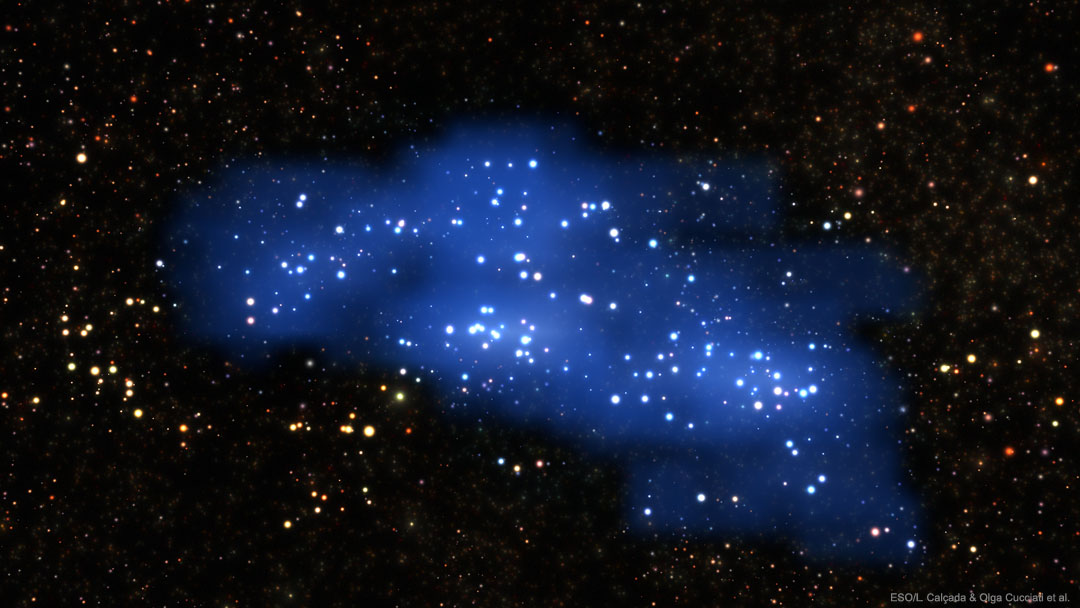
#SpaceForce Double Header On Tuesday
"Vice President Mike Pence is confirmed to speak at The Washington Post on October 23 as part of a "Transformers: Space" event. Pence, who serves as chairman of the National Space Council, will talk one-on-one with National Political Reporter Robert Costa about the Trump administration's plan to establish a Space Force as the sixth branch of the U.S. military and other important space policy matters."
9:00 AM - 11:30 AM EDT Live webcast
National Space Council Meeting
11:30 AM - 1:30 PM EDT Live webcast
.@POTUS has rightly called for the creation of a 6th branch of the Armed Forces to advance US dominance in space. #SpaceForce is an idea whose time has come. On 10/23, the National Space Council will meet @NDU_EDU to discuss progress made & next steps to implement POTUS' vision.
— Vice President Mike Pence (@VP) October 12, 2018
from NASA Watch https://ift.tt/2An25zz
via IFTTT
Hubble Is Getting Back To Normal
Hubble Moving Closer to Normal Science Operations
"NASA took great strides last week to press into service a Hubble Space Telescope backup gyroscope (gyro) that was incorrectly returning extremely high rotation rates. The backup gyro was turned on after the spacecraft entered safe mode due to a failed gyro on Friday, Oct. 5. The rotation rates produced by the backup gyro have since reduced and are now within an expected range. Additional tests will be performed to ensure Hubble can return to science operations with this gyro."
from NASA Watch https://ift.tt/2PP9cG6
via IFTTT
Making Space Policy That Does Not Get Erased
NASA's recent woes took root with loss of space shuttle program, Houston Chronicle
"The decision to end the shuttle program came in 2004 as President George W. Bush's administration shifted its focus to frontiers beyond Earth's orbit. But with too few coins to divvy up amongst its many projects and a lack of political direction, the history-making agency instead has been forced to change course virtually every four years as political winds change. "NASA's budget and policy seem to be based on Twitter," said Keith Cowing, editor of NASA Watch, a website devoted to space news. "It's like, 'How can I come up with something in 280 characters?' We can't think long term. We can't think multi-administrations." That leaves space agency leaders wondering what will happen after the 2020 election. President Donald Trump has pushed to bolster human exploration -- with an eye toward the moon and then onto Mars -- but what happens if he isn't re-elected is anyone's guess. Policy fluctuations "can be difficult to weather," Mark Geyer, director of NASA's Johnson Space Center in Houston, previously told the Houston Chronicle. "It can cause fluctuations in the space program and that's hard if you're trying to move the country forward. But that's life, so you need to develop strategies to navigate that."
from NASA Watch https://ift.tt/2EDBW3G
via IFTTT
Splashdown! Apollo 7 Returns Home

2018年10月21日 星期日
Apollo 12 Visits Surveyor 3

Can Sanctioned Roscosmos Chief Rogozin Visit The U.S.?
White House Temporarily Lifts Sanctions on Russia's Space Chief for U.S. Visit, Moscow Times
"The White House has temporarily lifted an entry ban imposed on the head of Russia's federal space agency to allow him to visit the United States, the head of NASA has said in an interview with Russian media. The U.S. banned entry to and froze the assets of ex-Deputy Prime Minister Dmitry Rogozin, along with other officials it blames for Moscow's seizure of the Crimean peninsula in March 2014. Rogozin, 54, oversaw Russia's powerful arms industry before he was appointed to head the Roscosmos state space agency earlier this year. Rogozin will now be able to travel to the U.S. under a workaround that removes the sanctions for the duration of his visit, NASA administrator Jim Bridenstine told the state-run TASS news agency Friday."
Issuance of a new Ukraine-related Executive Order; Ukraine-related Designations, U.S. Department of the Treasury
"ROGOZIN, Dmitry Olegovich (a.k.a. ROGOZIN, Dmitriy; a.k.a. ROGOZIN, Dmitry); DOB 21 Dec 1963; POB Moscow, Russia; Deputy Prime Minister of the Russian Federation (individual) [UKRAINE2]."
Executive Order 13660--Blocking Property of Certain Persons Contributing to the Situation in Ukraine, Federal Registry 10 March 2014
"I hereby find that the unrestricted immigrant and nonimmigrant entry into the United States of aliens determined to meet one or more of the criteria in subsection 1(a) of this order would be detrimental to the interests of the United States, and I hereby suspend entry into the United States, as immigrants or nonimmigrants, of such persons."
from NASA Watch https://ift.tt/2R6z8gN
via IFTTT
2018年10月19日 星期五
Halo of the Cat s Eye
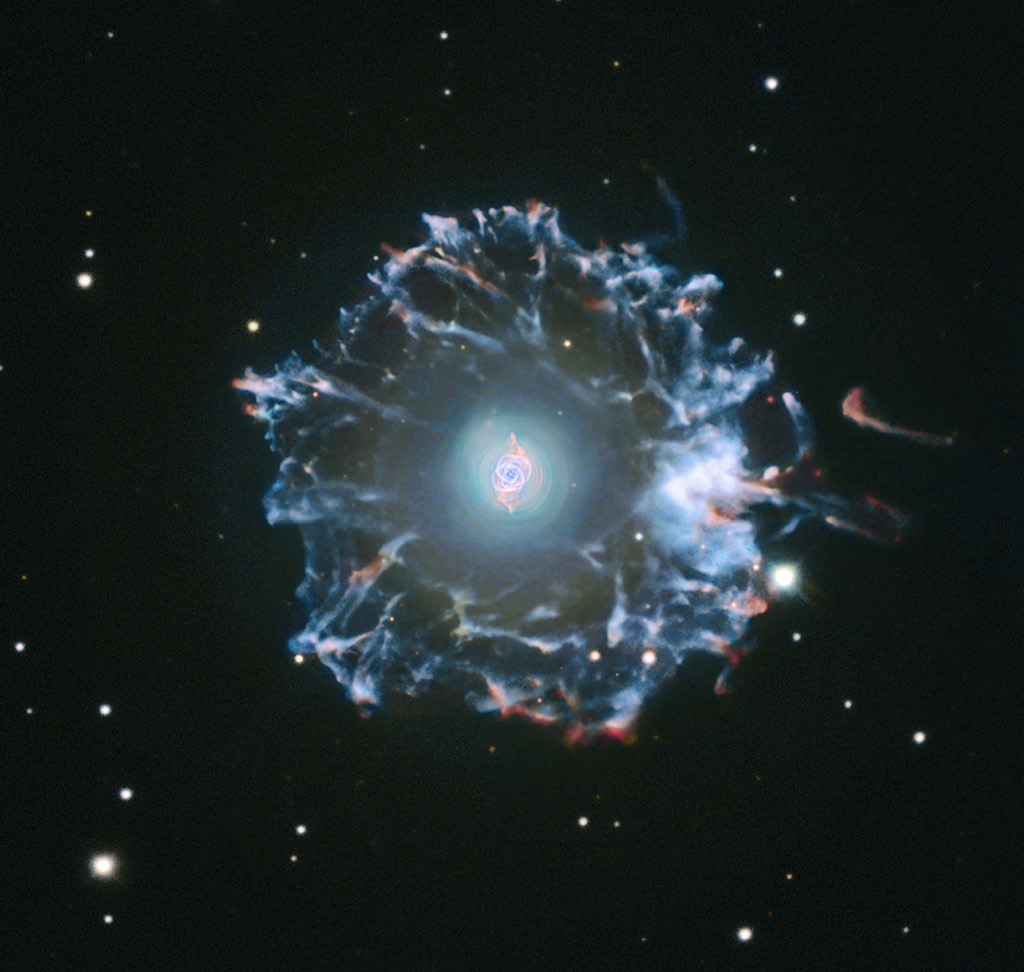
Hubble Spies Glittering Star Cluster in Nearby Galaxy

Is NASA Leading A Shift In Administration Climate Change Views?
Trump's NASA Administrator: 'No Reason' to Dismiss U.N. Climate Report, The Atlantic
"Koren: The United Nations recently released a troubling new report on climate change that outlined some of the devastating effects the planet should expect to see in the coming years. You've said before that you believe rising temperatures can be attributed to human activity. But many of your fellow Republicans in Congress and the White House dismissed the news. Where do you stand on the report?
Bridenstine: I have no reason to dismiss the report at all. nasa is one agency on the planet that does more to inform the world on how the climate is changing than any other agency, and we're going to continue to do that.
Koren: Do you see part of your role as administrator of nasa to discuss this with your fellow Republicans?
Bridenstine: My role is to deliver dispassionate science and allow policy makers to have these debates about it. Look, if I start engaging in what to do about the science that we receive, then it politicizes what nasa is all about, and we don't want to do that. All we're going to do is study the planet and make sure that all of that data and all of that science is made available to the public."
Donald Trump: Climate 'will change back again', CNN
"President Donald Trump has said he doesn't believe that climate change is a hoax -- but added Sunday night that "it'll change back again." In the wake of a report from the global scientific authority on climate change warning that governments around the world must take "rapid, far-reaching and unprecedented changes in all aspects of society" to avoid disastrous levels of global warming, Trump was asked for his views on climate change during an interview on CBS's "60 Minutes." Trump replied: "I think something's happening. Something's changing and it'll change back again. I don't think it's a hoax, I think there's probably a difference. But I don't know that it's man-made."
from NASA Watch https://ift.tt/2NQf4x4
via IFTTT
ISS Daily Summary Report – 10/18/2018
October 19, 2018
from NASA https://ift.tt/2q0xvpi
via IFTTT
2018年10月18日 星期四
Soyuz Launcher Recovery Plan Starts To Emerge
Roscosmos to make three unmanned launches before next manned flight, TASS
"Russia's space corporation Roscosmos will carry out three unmanned launches by the end of the year before the next manned mission will be put in space, Roscosmos's executive director for manned space programs, Sergei Krikalyov, told a news conference on Wednesday. "The Soyuz rocket will be launched only after the inquiry has identified the causes of the emergency and measures have been taken to prevent such situations in the future. Under the existing rules there must be at least one unmanned launch before the flight of a manned spacecraft. We have plans for at least three launches (before the next manned mission due in early December) from the Kourou space site, the launch of an unmanned spacecraft and of an unmanned spacecraft Progress. The confirmations will be more than enough to put the next crew in space," Krikalyov said."
from NASA Watch https://ift.tt/2R3BOvJ
via IFTTT
ISS Daily Summary Report – 10/17/2018
October 18, 2018 at 12:00AM
from NASA https://ift.tt/2OAF5G9
via IFTTT
Launching the Galileo Mission

2018年10月17日 星期三
Cherenkov Telescope at Sunset
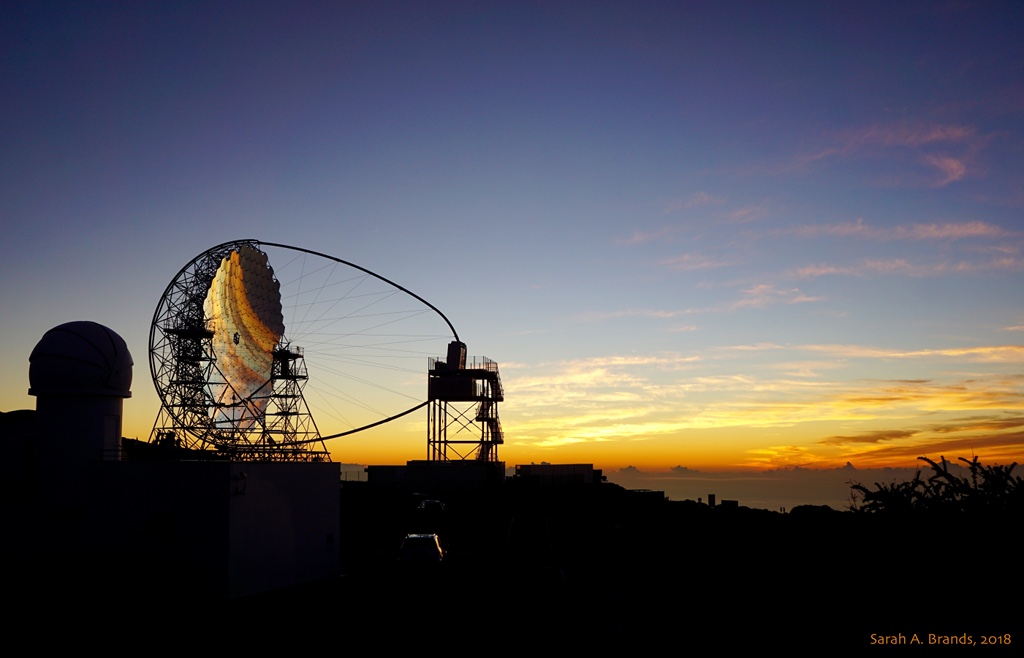
Morhard Sworn In As NASA Deputy Administrator
Jim Morhard was just sworn in as the 14th Deputy Administrator of NASA. I'm excited to have him join the @NASA family at this crucial time in our agency's history. pic.twitter.com/TX8SHHnpMn
— Jim Bridenstine (@JimBridenstine) October 17, 2018
from NASA Watch https://ift.tt/2QUUugU
via IFTTT
NASA Invites Media to Northrop Grumman Cygnus Launch from Virginia
October 17, 2018
from NASA https://ift.tt/2NMu5Qu
via IFTTT
Tabloid Headlines At New Scientist
For the third day in a row @Newscientist wins the stupid space headline of the day award. They said they'd fix it but its still wildly inaccurate clickbait @jjaron https://t.co/PvvH9wPavx
— NASA Watch (@NASAWatch) October 17, 2018
As I said, I am happy to fix any specific inaccuracy. You have not pointed one out.
— Jacob Aron (@jjaron) October 17, 2018
The Soyuz did not "crash". It landed safely. The failure of this mission will not "Kill ISS", and nothing connected to this event would "set back spaceflight by decades" Are you folks really this clueless about the topic? @jjaron @newscientist
— NASA Watch (@NASAWatch) October 17, 2018
from NASA Watch https://ift.tt/2CrzwCe
via IFTTT
NASA to Host Briefings, Events for ICON Launch to Study Space Weather
October 17, 2018
from NASA https://ift.tt/2QYOzaQ
via IFTTT
NASA Wallops Plays Games With The News Media Once Again
Wallops is excited and proud to welcome @RocketLab to the Mid-Atlantic Regional Spaceport. Have a question? Use #AskAboutLC2 or watch live: https://t.co/YsAyesMVkz
— NASA Wallops (@NASA_Wallops) October 17, 2018
Keith's note: Great commercial space news. RocketLab is coming to NASA Wallops in Virginia to do commercial space launches. You'd think that all parties involved would want as much media present as possible - especially Virginia-based space media (like NASAWatch). Guess again. I first learned about this event, held on a NASA facility, staffed by NASA personnel, announced after it was underway on social media and broadcast on a NASA TV channel when I saw mention of it on Twitter. NASA Wallops PAO sent me nothing in advance. I caught the tail end of the webcast and discovered that there was also a phone bridge for media who are offsite to dial in to ask questions. No one at NASA Wallops PAO told me about that either. This is not the first time Wallops PAO has played this sort of games with me. I have sent an email to NASA PAO and Wallops personnel asking why NASAWatch was excluded from the advance notice and access provided to other news media. Until/unless I get a response (normally I get no response from Wallops) I am torn with ascribing this to incompetence - or spite- on Wallops' part given that this happens to me with some regularity.
Although I had no advance notice of this event, this is the question that popped into my head for RocketLab: "You are going to be doing a lot of launches at Wallops - and they do a lot of suborbital launches for student projects. Is your company looking to work with NASA and M.A.R.S. to provide additional opportunities for students and interns in Virginia to learn about space?".
from NASA Watch https://ift.tt/2yotwYj
via IFTTT
Magnetic Fields May Be the Key to Black Hole Activity

ISS Daily Summary Report – 10/16/2018
October 17, 2018 at 12:00AM
from NASA https://ift.tt/2ymTKKS
via IFTTT
2018年10月16日 星期二
M15: Dense Globular Star Cluster

ISS Daily Summary Report – 10/15/2018
October 16, 2018 at 12:00AM
from NASA https://ift.tt/2AdNgz0
via IFTTT
New NASA Podcast Shares ‘Invisible’ Stories of Spaceflight
October 16, 2018
from NASA https://ift.tt/2OxdCov
via IFTTT
Uncrewed Japanese Vehicle Delivers Supplies to the Space Station

2018年10月15日 星期一
Jupiter in Ultraviolet from Hubble

Paul Allen
It is with deep sadness that we announce the death of @PaulGAllen, our founder and noted technologist, philanthropist, community builder, conservationist, musician and supporter of the arts. All of us who worked with Paul feel an inexpressible loss today. https://t.co/OMLZ7ivvSD pic.twitter.com/Bfa8kK6Q8e
— Vulcan Inc. (@VulcanInc) October 15, 2018
I did not know Paul Allen personally, but I enthusiastically followed the Ansari X-Prize in 2004 and stood on the wing of Stratolaunch in 2015. His vision continues by the many people he inspired. My prayers are with his family.
— Jim Bridenstine (@JimBridenstine) October 16, 2018
from NASA Watch https://ift.tt/2OtGCgO
via IFTTT
NASA Television to Air Live Interviews with Astronaut Nick Hague
October 15, 2018
from NASA https://ift.tt/2Epu1H0
via IFTTT
NASA MSFC Employee Tries To Make Serkan Golge's Past Disappear
Keith's note: You all may be familiar with Serkan Golge, a NASA JSC employee who has been imprisoned in Turkey for bogus reasons for a long time. A NASAWatch reader noticed that someone at NASA is using the agency's Internet access to make changes to Golge's Wikipedia page - apparently in an effort to diminish his role at NASA. Golge was a full-time contractor with an office next to the MCC. But if you look at the edits it would seem that someone who wanted to minimize his role changed his page to say "working on projects." instead. Have a look at the before and after edits here. And another one here.
The NASA IP address where these edits originated is 156.68.64.53
IP Address - 156.68.64.53
City - Redstone Arsenal
State/Region - Alabama
Country Code - United States
Postal Code - 35812
ISP - National Aeronautics and Space Administration
Time Zone -05:00
NASA's CIO Office is mostly useless. Let's see if they look into this. They should.
- One Of Your NASA Coworkers Is Still In a Turkish Jail Cell, earlier post
- NASA Employee Imprisoned By Turkey For No Reason, earlier post
from NASA Watch https://ift.tt/2EnK5sX
via IFTTT